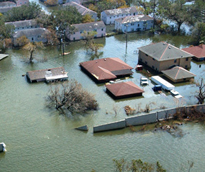
Contact our PIO directly to share health news.

770.339.4260
Flood Safety

Flood Awareness
More people drown in their cars than anywhere else during a flood. People believe the weight of their car will keep them on the road. Think about it for a moment. An aircraft carrier weighs 97,000 tons and it floats. A foot of water will float many vehicles and two feet of rushing water can carry away most vehicles – including SUV’s.
Flood and flash flood WATCHES meanflooding is possible, be prepared to move to higher ground and tune in for weather information.
Flood and flash flood WARNINGS mean flooding is occurring and if advised to evacuate, do so immediately, even if on foot.
All floods are not alike. Some floods develop slowly, sometimes over a period of days. But flash floods can develop quickly, even in just a few minutes and without any visible signs of rain. Flash floods often have a dangerous wall of roaring water that carries rocks, mud, and other debris and can sweep away most things in its path. Overland flooding occurs outside a defined river or stream, such as when a levee is breached, but still can be very destructive.
The Danger is Real
- The first step is to protect you home and family by purchasing flood insurance (www.floodsmart.gov). Standard homeowner’s insurance does not cover flooding.
- Copy important documents and take pictures of possessions.
- Monitor NOAA Weather Radio or other media.
- Don’t walk through a flooded area because 6 inches of moving water can knock you down.
- Don’t drive through flooded areas and stay away from downed power lines.
- Avoid floodwaters; water may be contaminated by oil, gasoline, or raw sewage.
- Watch out for animals that have lost their homes during a flood. Animals may seek shelter in your home and aggressively defend themselves (especially poisonous snakes).
Contact our PIO directly to share health news.


